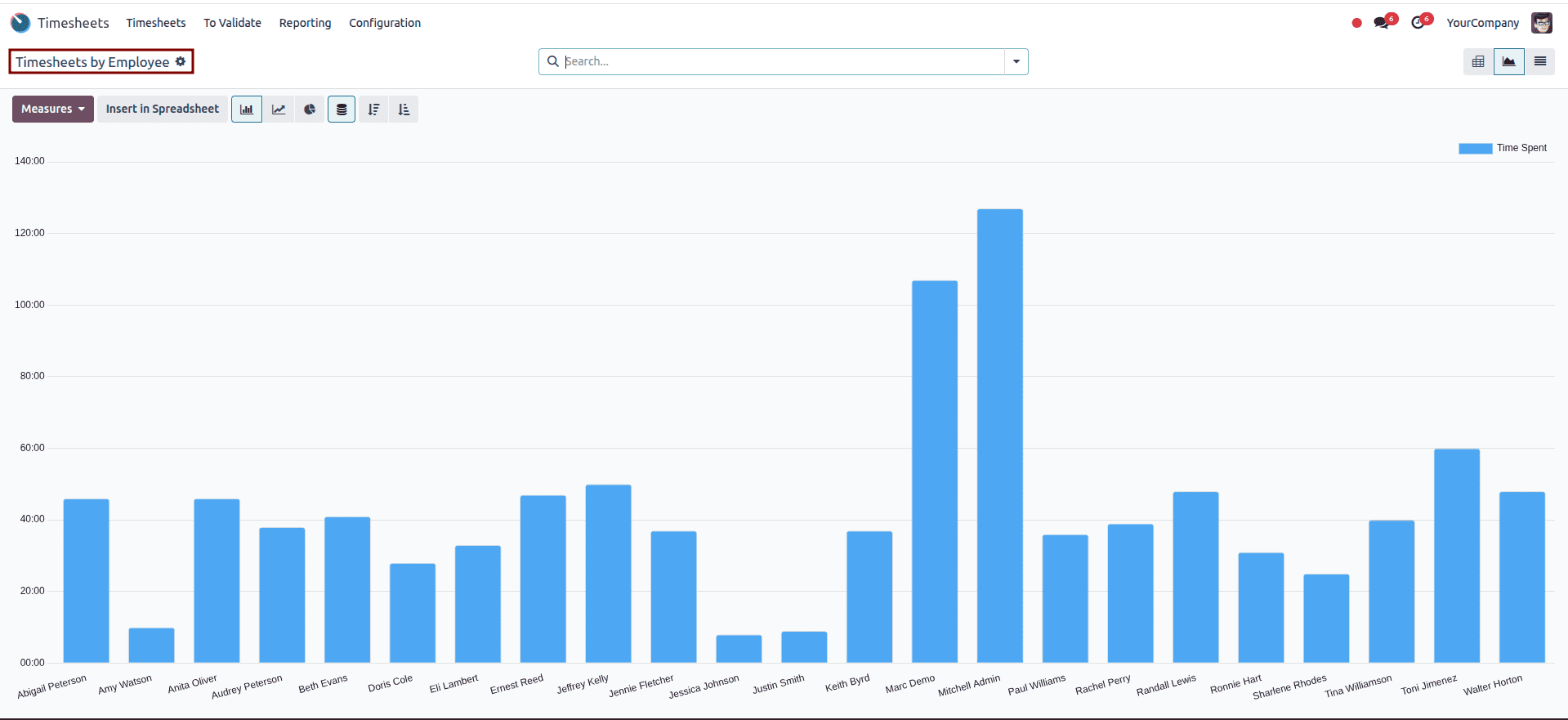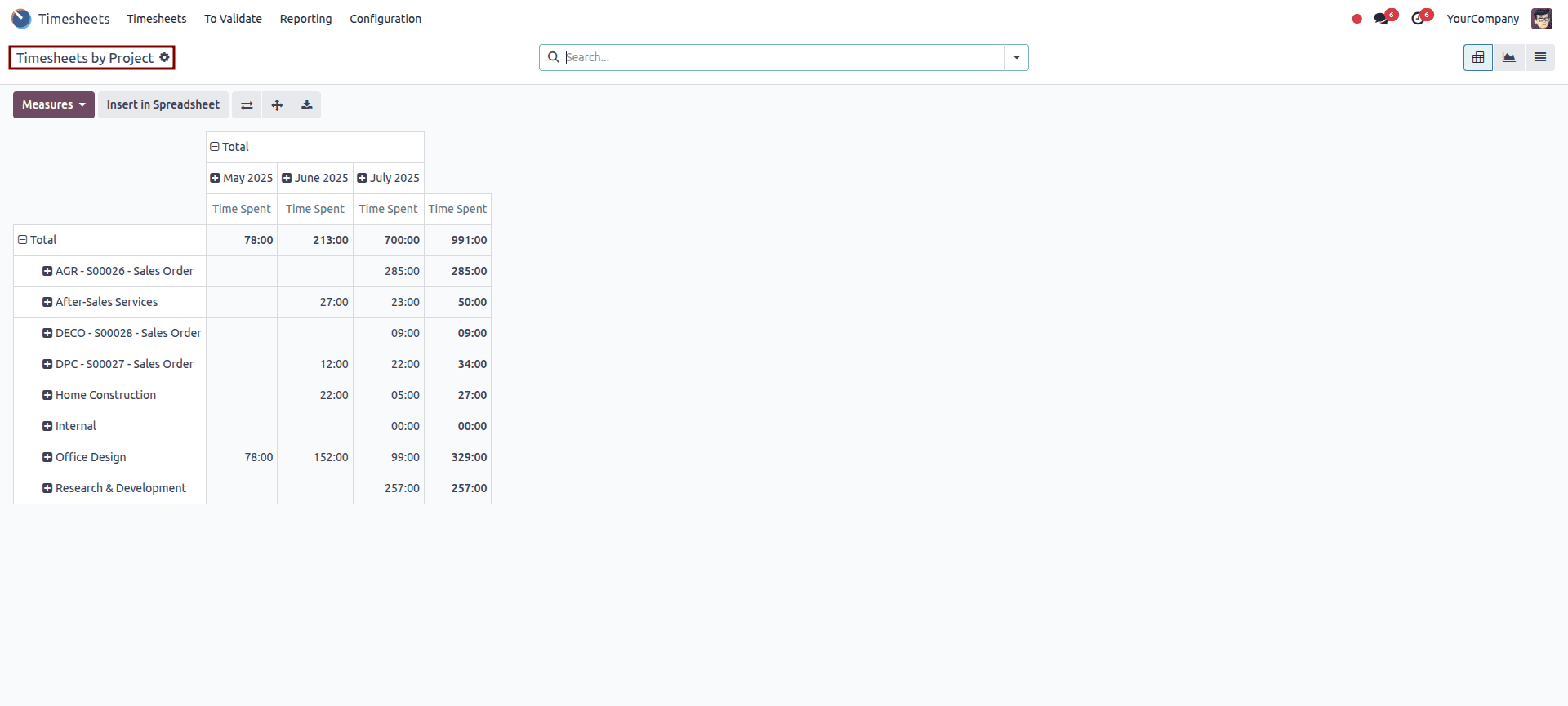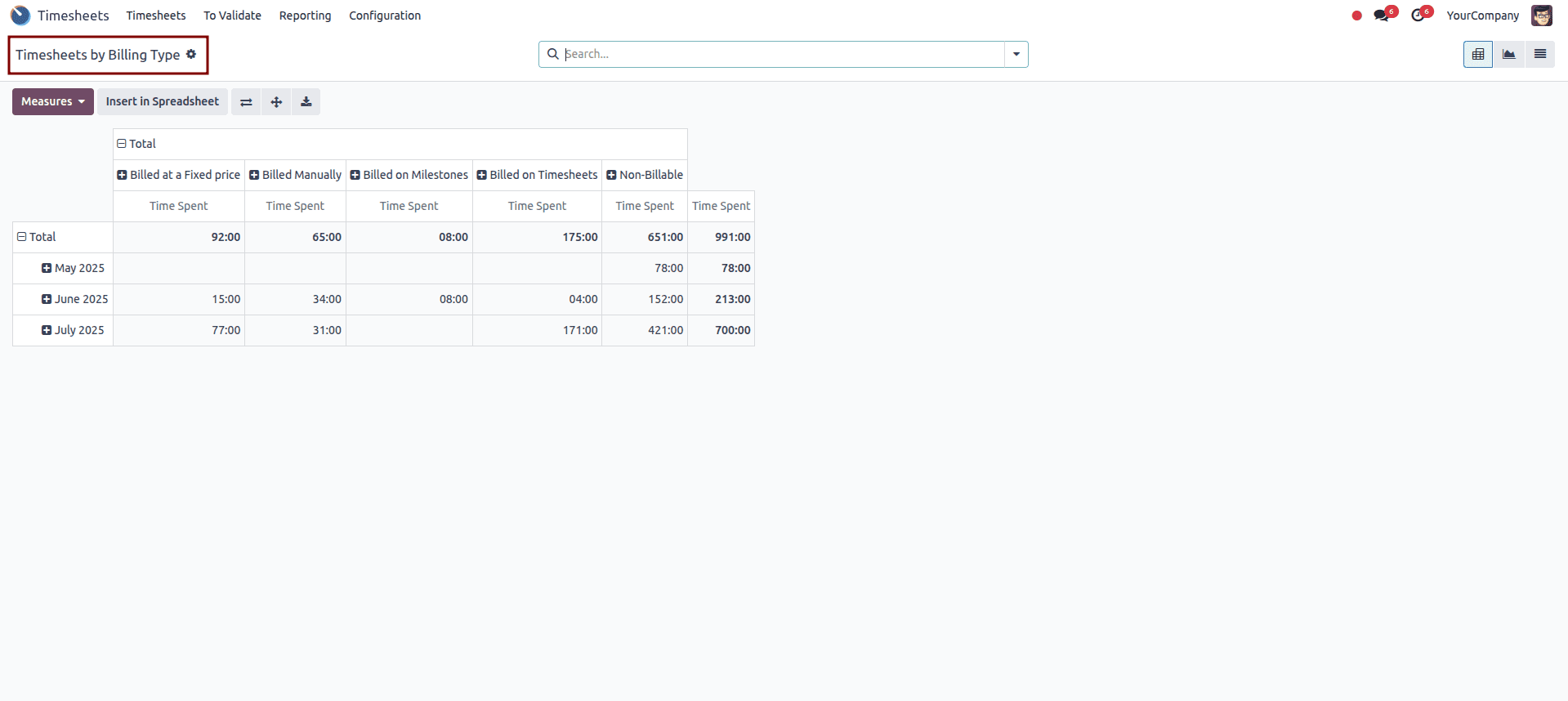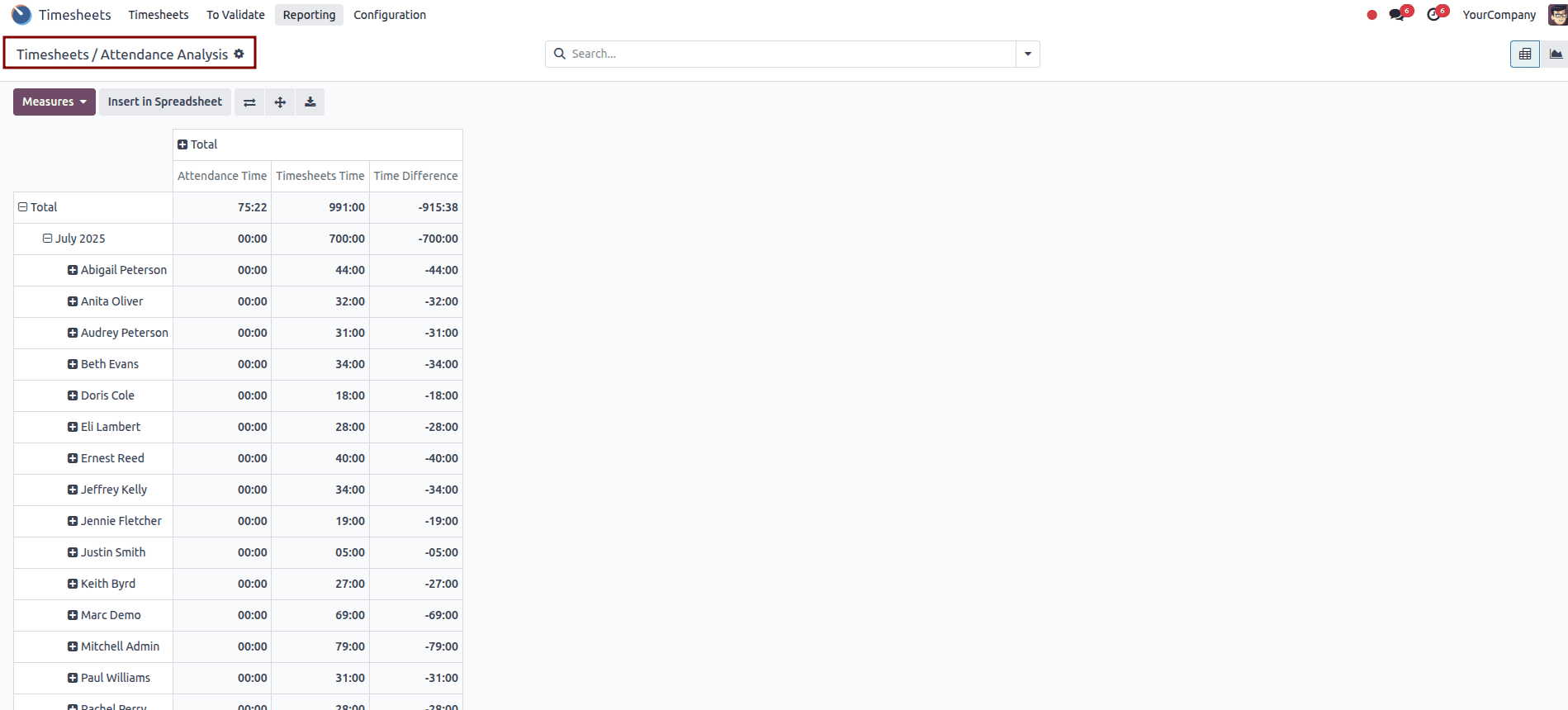In Odoo 18, Timesheet Reporting serves as a comprehensive tool that provides organizations with a detailed overview of how employee working hours are distributed across different tasks, projects, and analytic accounts. Accurate time tracking is crucial for businesses, whether for monitoring employee productivity, billing clients, or managing internal costs. Timesheet Reporting in Odoo 18 enables managers and HR professionals to make informed decisions by offering different perspectives on time data, supported by flexible views such as list, pivot tables, and graphical summaries.
By using this reporting system, businesses can gain deeper insights into workforce efficiency, resource allocation, and project performance. For service-oriented companies, timesheets also act as the backbone of client billing, ensuring that invoices are based on actual hours worked. On the other hand, for internal operations, the data ensures proper cost tracking and evaluation of project profitability.
Benefits of Odoo 18 Timesheet Reporting
- Enhanced Productivity Monitoring – Managers can see exactly where employee time is going and take action to reduce inefficiencies.
- Accurate Client Billing – Service companies benefit from precise billable hour tracking, ensuring that invoices are based on actual work.
- Cost Management – By analyzing fixed-price vs. hourly projects, organizations can evaluate profitability and adjust accordingly.
- Better Resource Allocation – Reports make it clear if certain employees or departments are overburdened or underutilized.
- Transparency and Accountability – Employees become more accountable for their time, leading to improved discipline and performance.
- Decision-Making Support – With pivot tables, graphs, and detailed reports, management gains reliable data for strategic planning.
Odoo 18 offers several categorized reports, such as Timesheet by Employee, Timesheet by Project, Timesheet by Task, Timesheet by Billing Type, and Timesheet/Attendance Analysis. Each of these reporting views provides a unique angle to evaluate time-related data, empowering managers with actionable information.
Timesheet By Employee
The “Timesheets by Employee” report gives managers a clear breakdown of the hours logged by each employee over a selected period. This could be weekly, monthly, or customized to fit project timelines. For example, if an employee spends 30 hours on Project A and 10 hours on Project B within a given week, this report reflects the distribution, offering transparency into how their time was utilized.
This view is highly beneficial for:
- HR teams: to cross-check attendance and ensure payroll accuracy.
- Project managers: to assess employee performance and contribution levels.
- Employees themselves: to review their own work patterns and identify time allocation improvements.
Additionally, this report supports accountability by clearly showing whether employees are meeting their expected working hours. When combined with attendance records, it helps identify trends such as overtime, underutilization, or absenteeism.

Timesheet By Project
The “Timesheets by Project” feature organizes reported hours at the project level. This allows managers to analyze how much time is being spent on each project, compare it against planned allocations, and identify potential delays or budget overruns.
For example, if a project was estimated to require 100 hours but the timesheet shows 150 hours already consumed midway, managers can take corrective action early—such as redistributing tasks, hiring additional resources, or revising project timelines.
Odoo provides flexible viewing modes, such as:
- List view for quick summaries.
- Pivot view for in-depth analysis with filters and grouping.
- Kanban view for a more visual project-centric perspective.
This makes it easier for project leads to ensure that projects remain on track and aligned with client expectations.

Timesheet By Tasks
The “Timesheets by Tasks” option offers a task-level breakdown of hours worked. While the project-level report shows the big picture, the task-level view dives deeper into specific activities within a project.
This is particularly useful in project management when assessing whether certain tasks are taking longer than expected. For instance, if a task that was supposed to take five hours ends up consuming 20 hours, managers can investigate whether it’s due to lack of resources, skill gaps, or scope creep.
Benefits include:
- Detailed productivity tracking: Helps identify which tasks consume most of the employee’s time.
- Workload distribution: Ensures no single employee is overloaded with complex tasks.
- Planning accuracy: Improves estimation for future projects by learning from past task durations.

Timesheet By Billing Type
Service-based organizations often deal with different billing models such as hourly billing, fixed-price projects, or non-billable activities. The “Timesheets by Billing Type” report categorizes logged time into these groups, giving finance and project management teams a clearer understanding of where resources are being invested.
Key features include:
- Billable hours by timesheet: Ensures accurate client invoicing.
- Fixed-price projects: Allows comparison between actual hours spent and the agreed project fee to evaluate profitability.
- Non-billable tasks: Tracks internal activities, training, or administrative work that does not directly generate revenue.
By reviewing this data, organizations can better understand their cost structure and adjust pricing strategies. For example, if a fixed-price project consistently consumes more hours than estimated, managers may need to renegotiate future contracts or refine scope management practices.

Timesheet/ Attendance Analysis
The Timesheet/Attendance Analysis feature bridges the gap between actual attendance (clock-in/clock-out) and reported timesheet entries. It highlights discrepancies between the hours and the employee was present and the hours they logged as productive work.
For instance, if an employee’s attendance shows eight hours but the timesheet only logs five hours, managers can investigate the gap. This ensures that work hours are not only recorded but also utilized effectively.
Odoo provides two primary views here:
- Pivot tables: Summarize data month by month, comparing logged hours against attendance.
- Graph views: Offer visual insights with bar charts, line graphs, or pie charts for quick identification of trends.
This comparison promotes fairness, transparency, and accuracy in workforce reporting. It also discourages underreporting or overreporting of hours.

Odoo 18’s Timesheet Reporting module is more than just a tracking system, it is a decision-making tool. By offering multiple reporting perspectives such as employee, project, task, billing type, and attendance comparison, it provides organizations with complete visibility into how time is spent.
For managers, it ensures projects stay on schedule and within budget. For HR, it ensures payroll accuracy and fair workload distribution. For finance teams, it ensures billing aligns with the real work performed. Ultimately, it drives productivity, accountability, and profitability across the organization.
With flexible report formats and user-friendly analysis tools, Odoo 18 empowers businesses to transform raw time data into actionable insights that support growth and efficiency.
To read more about How Timesheets are Billed in Odoo 18, refer to our blog How Timesheets are Billed in Odoo 18.